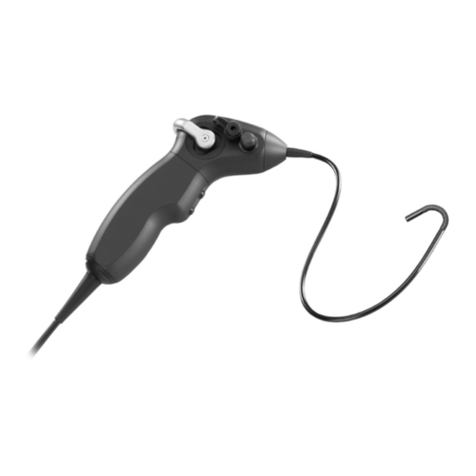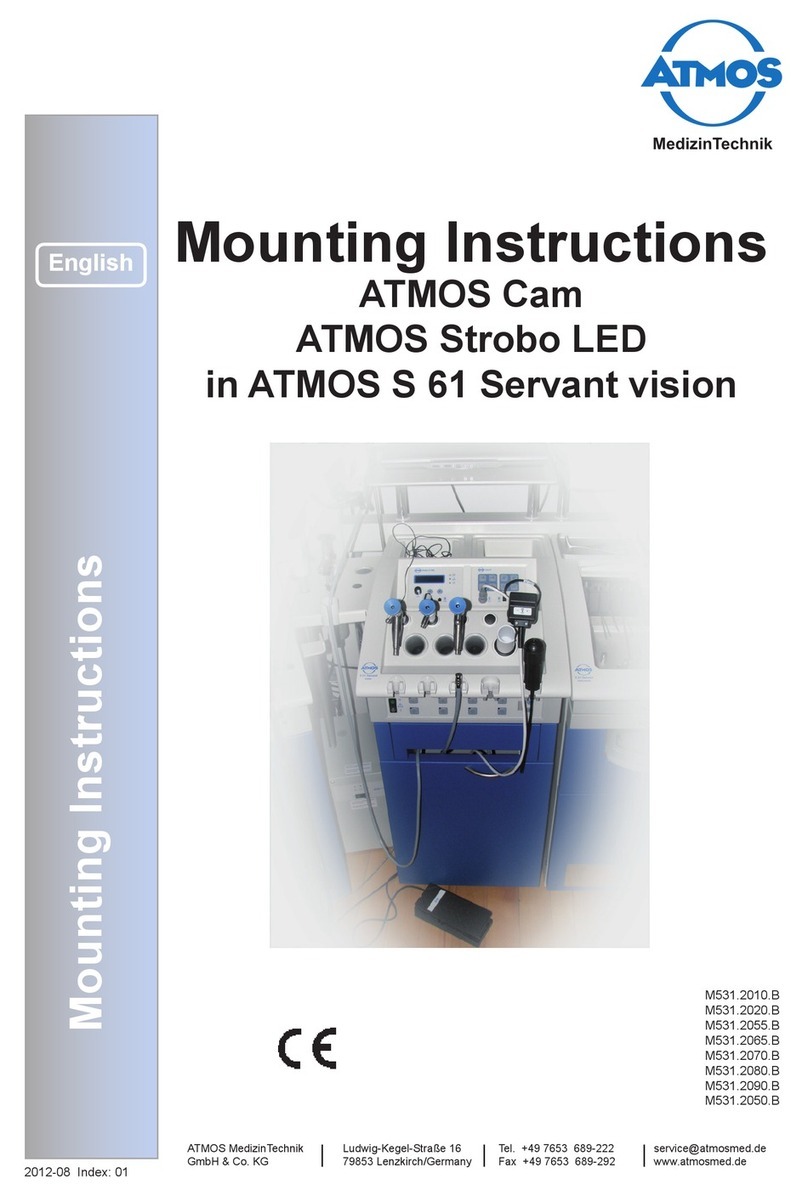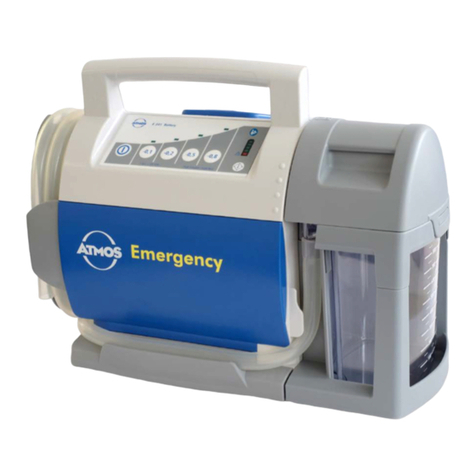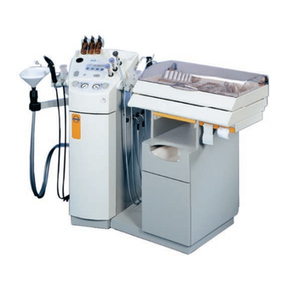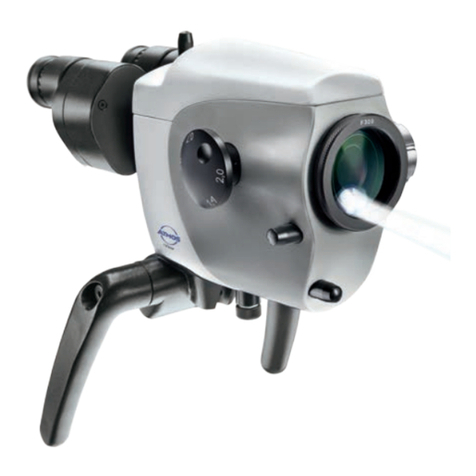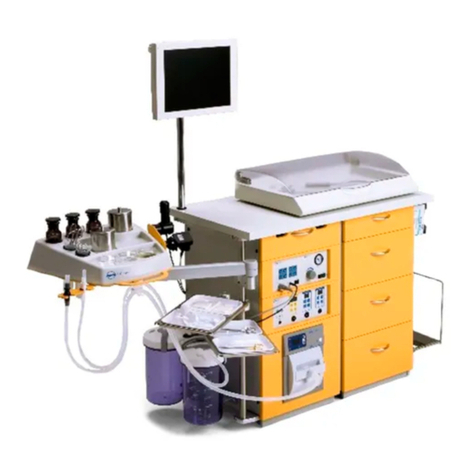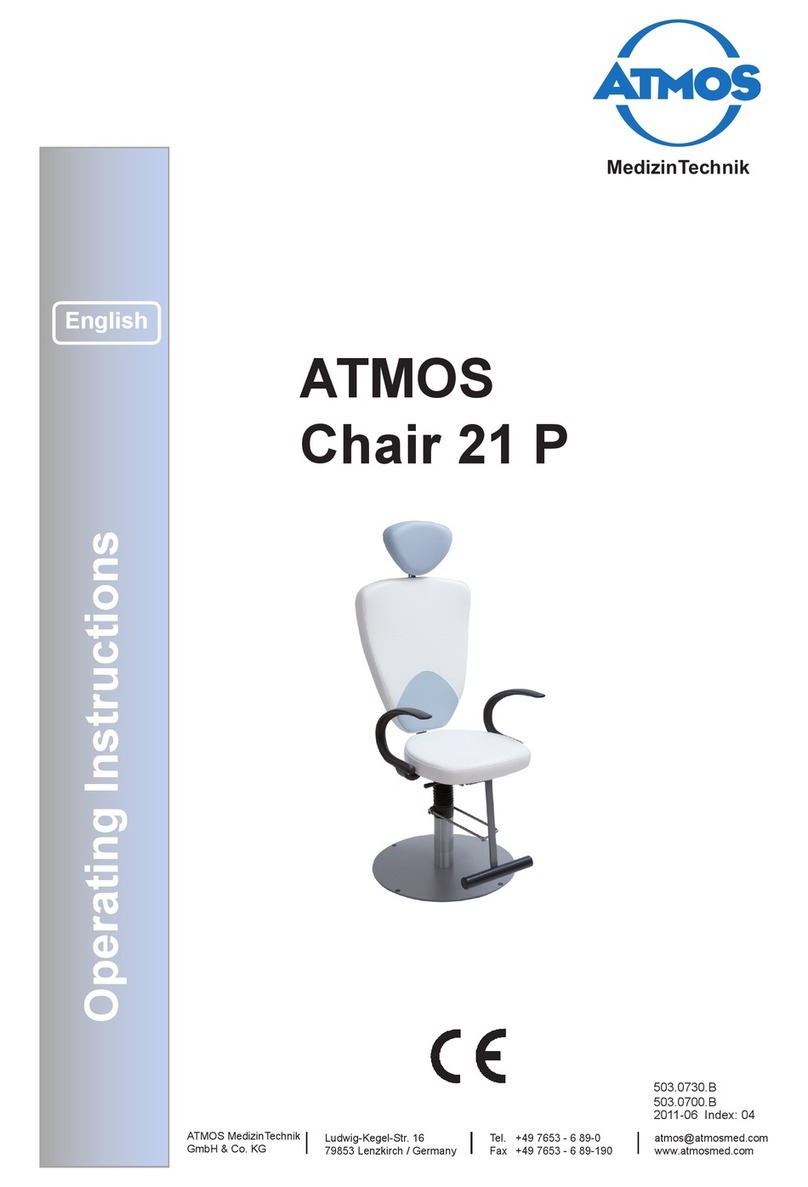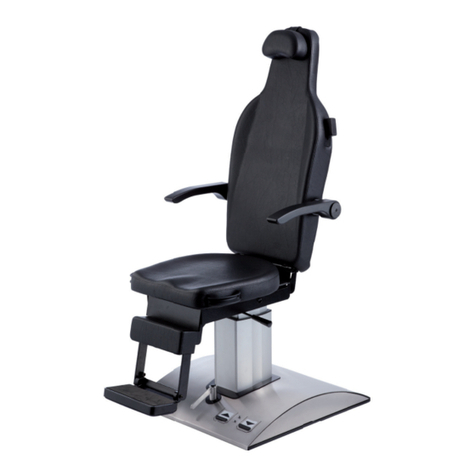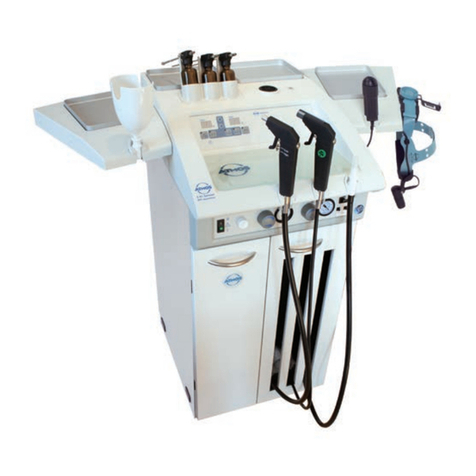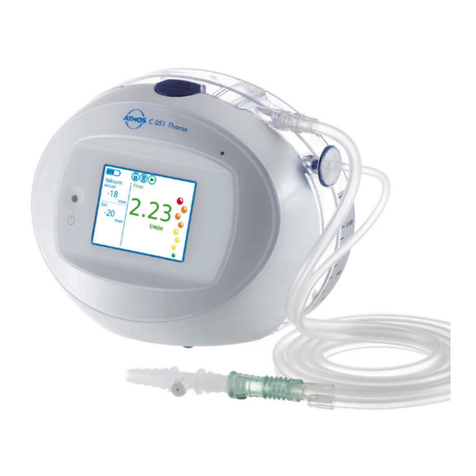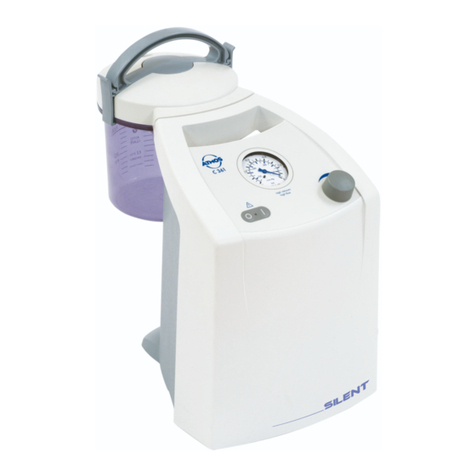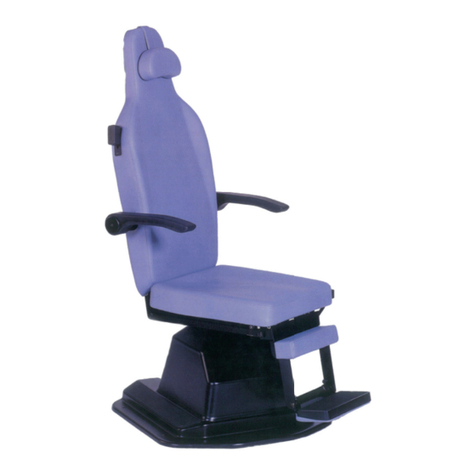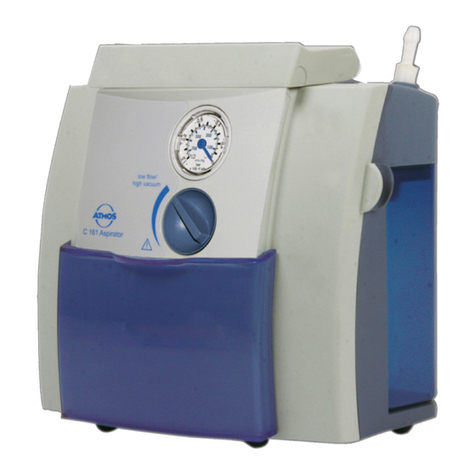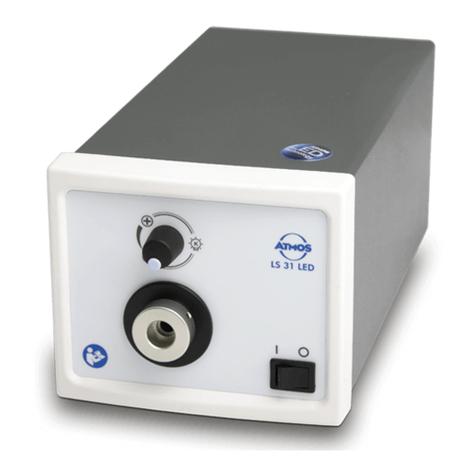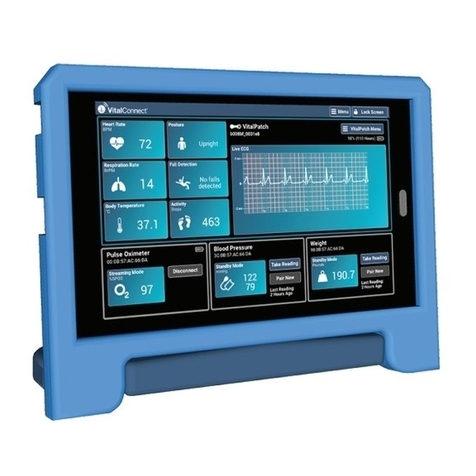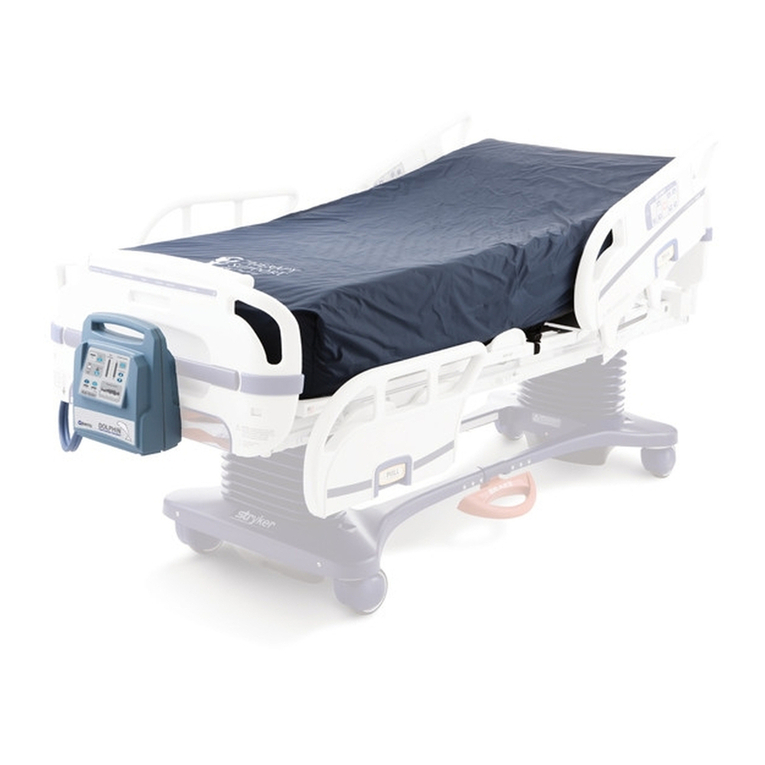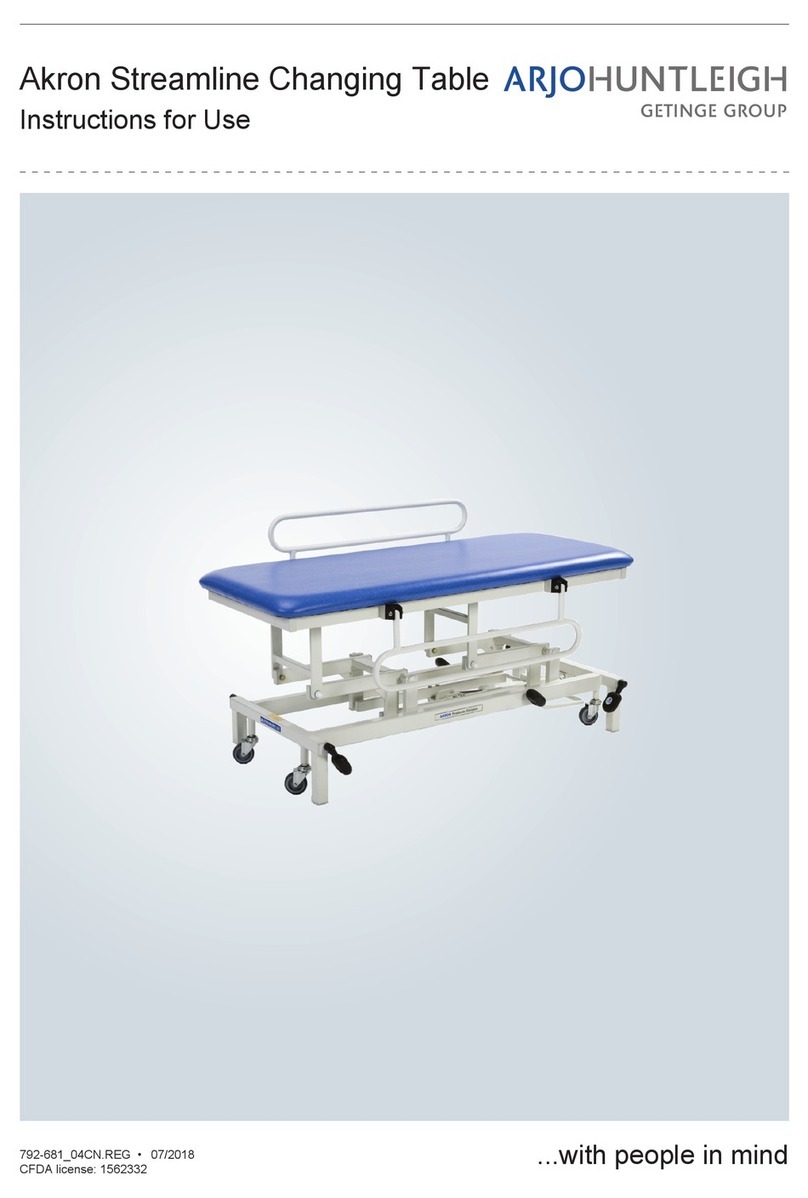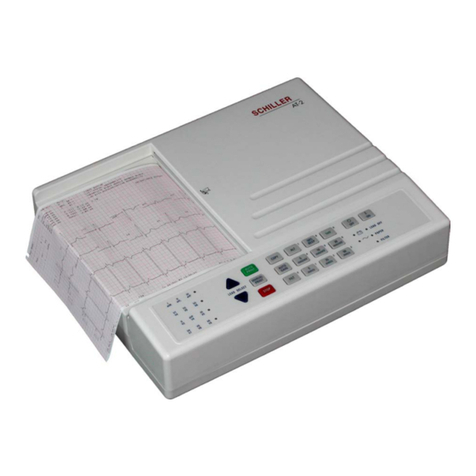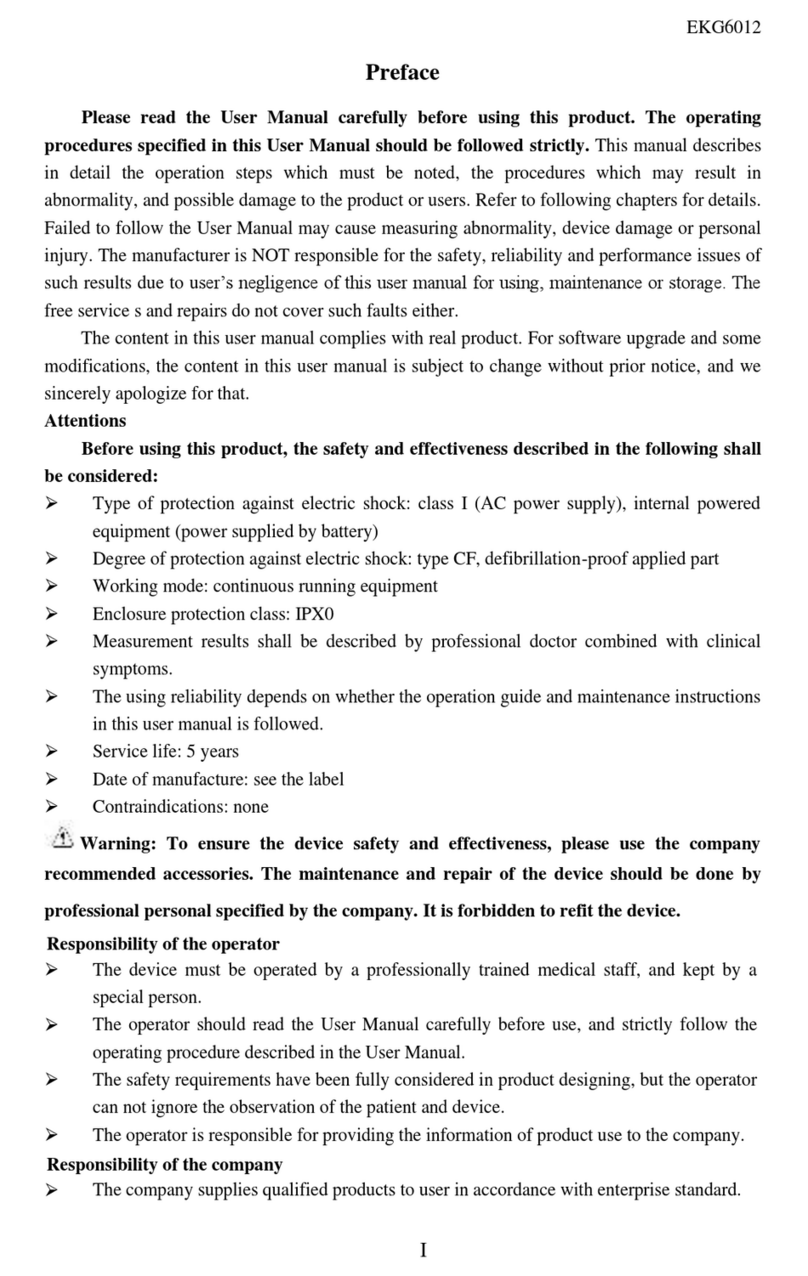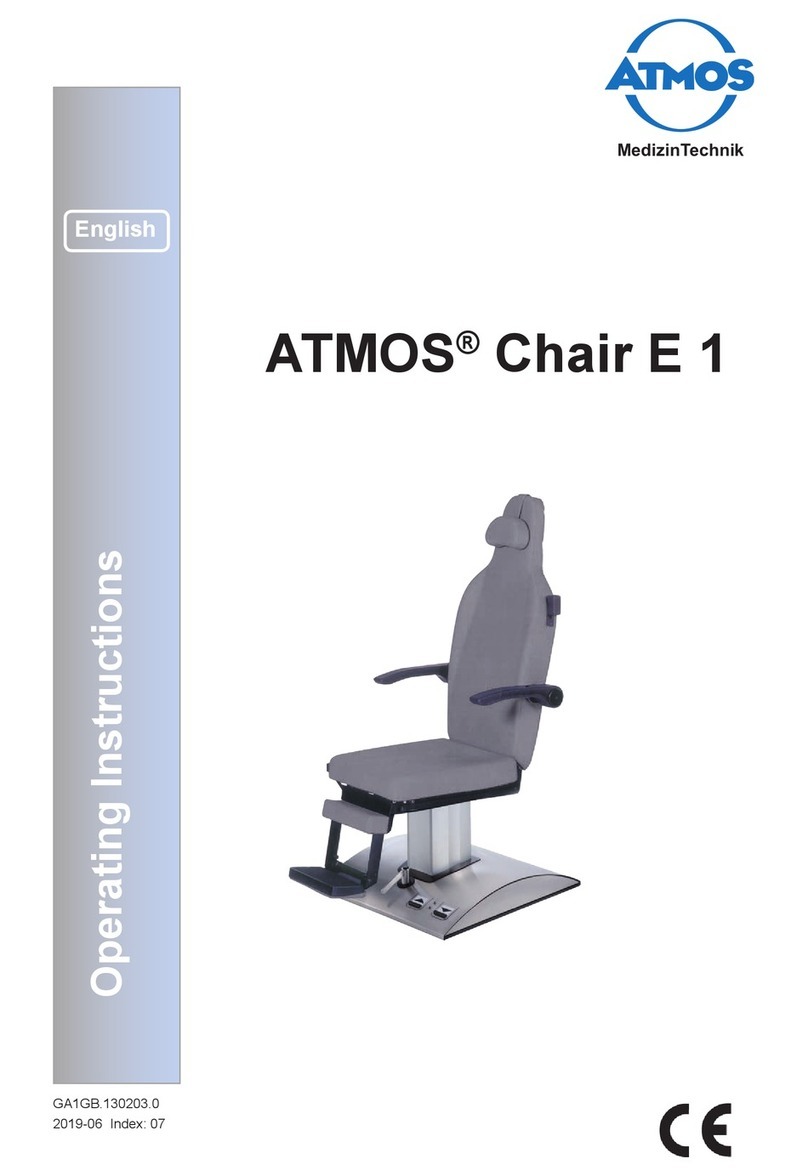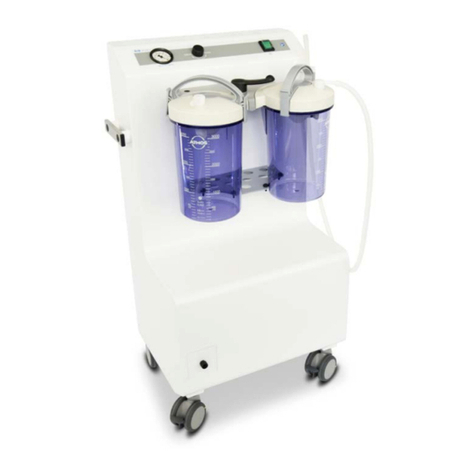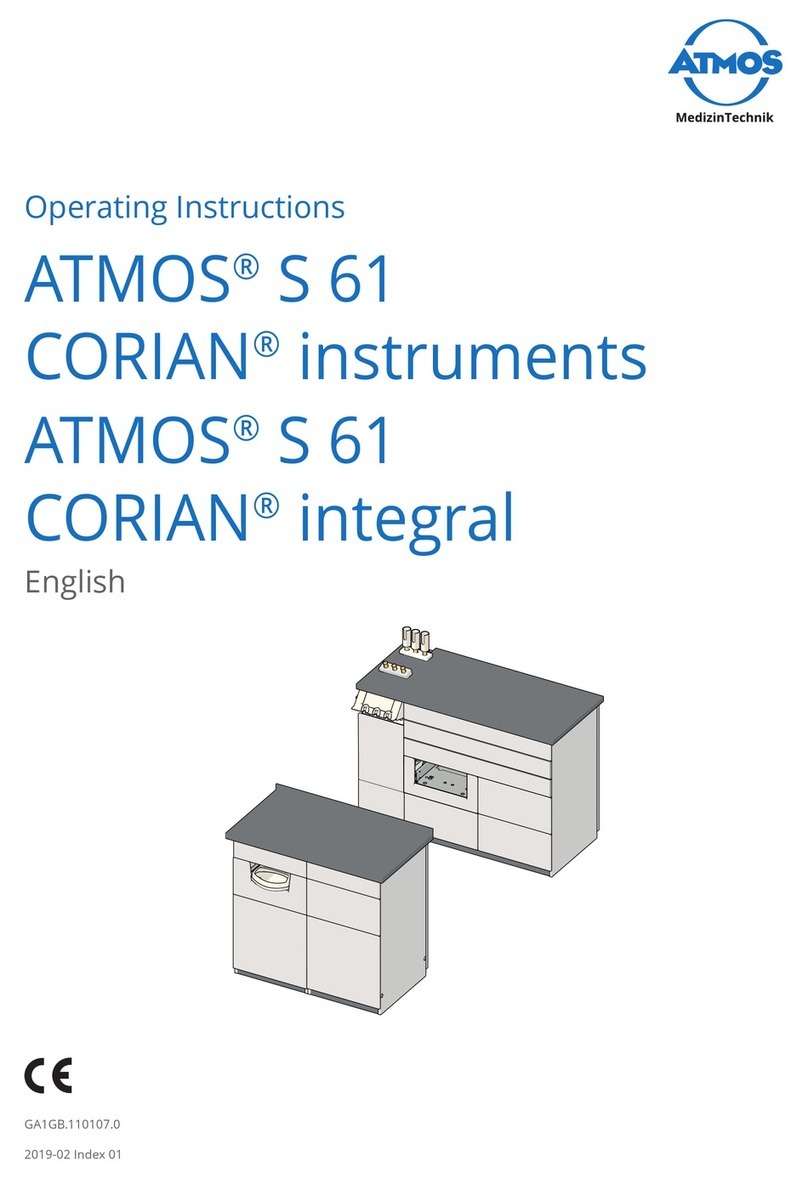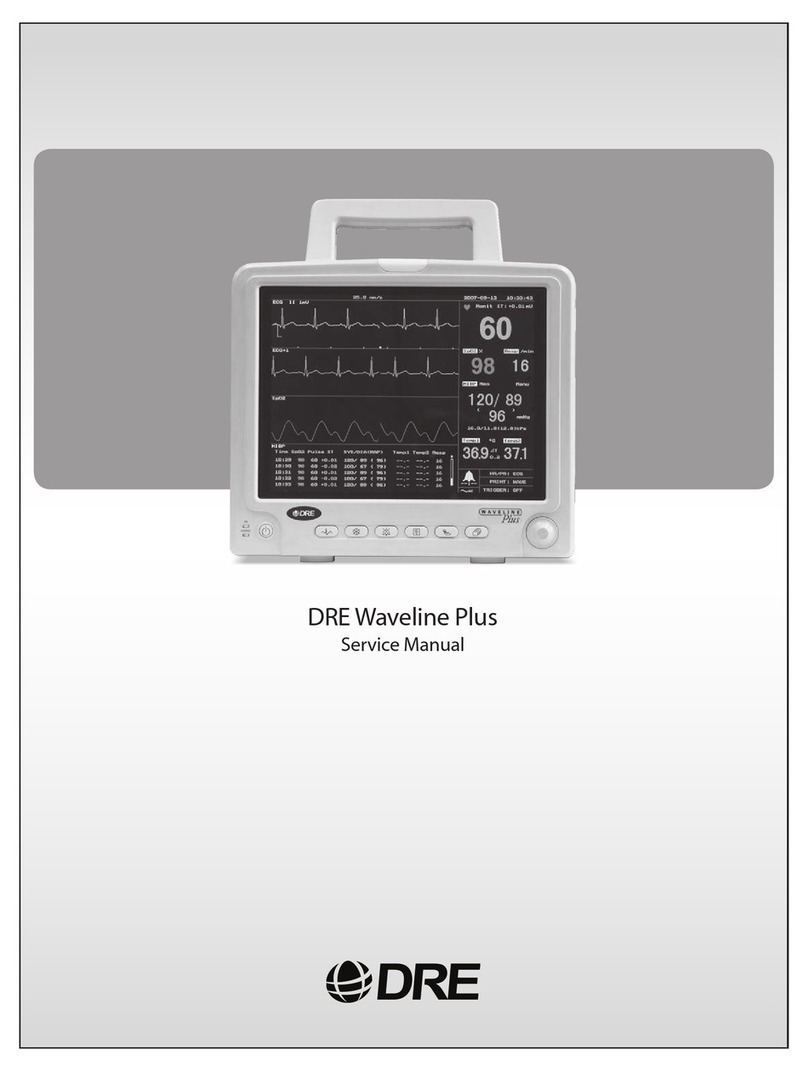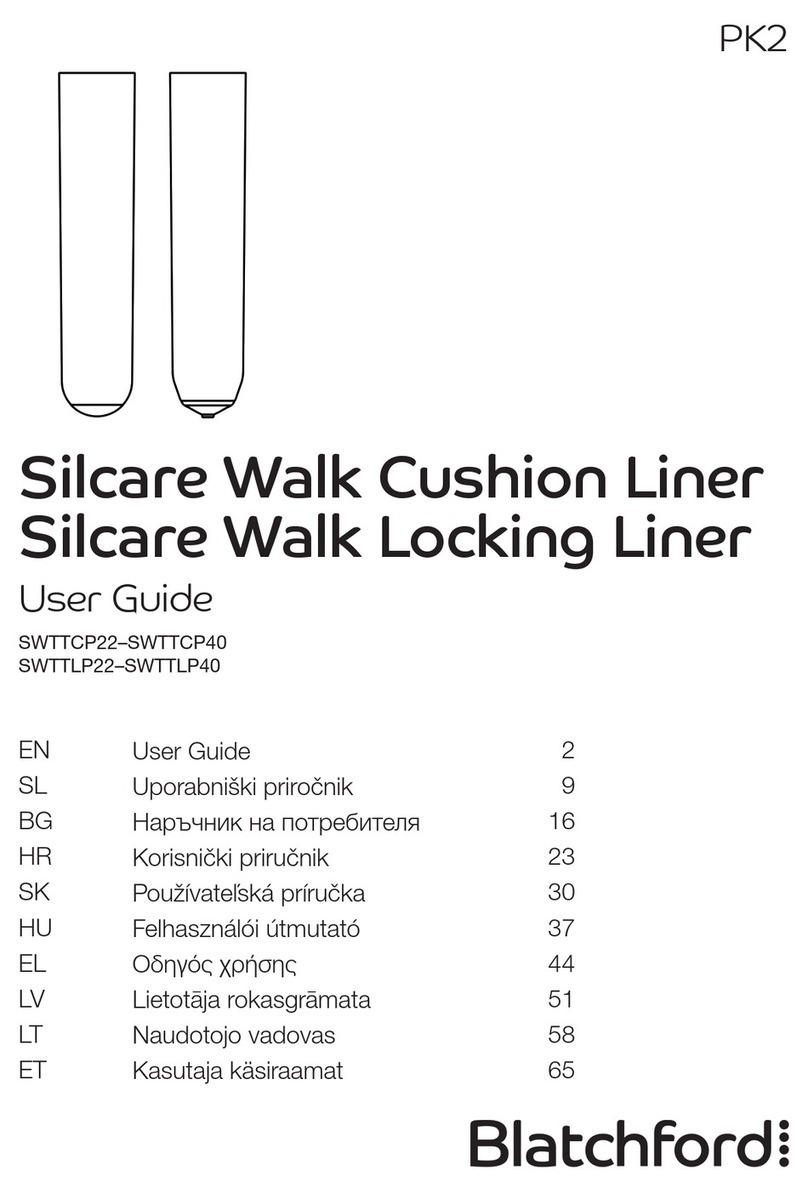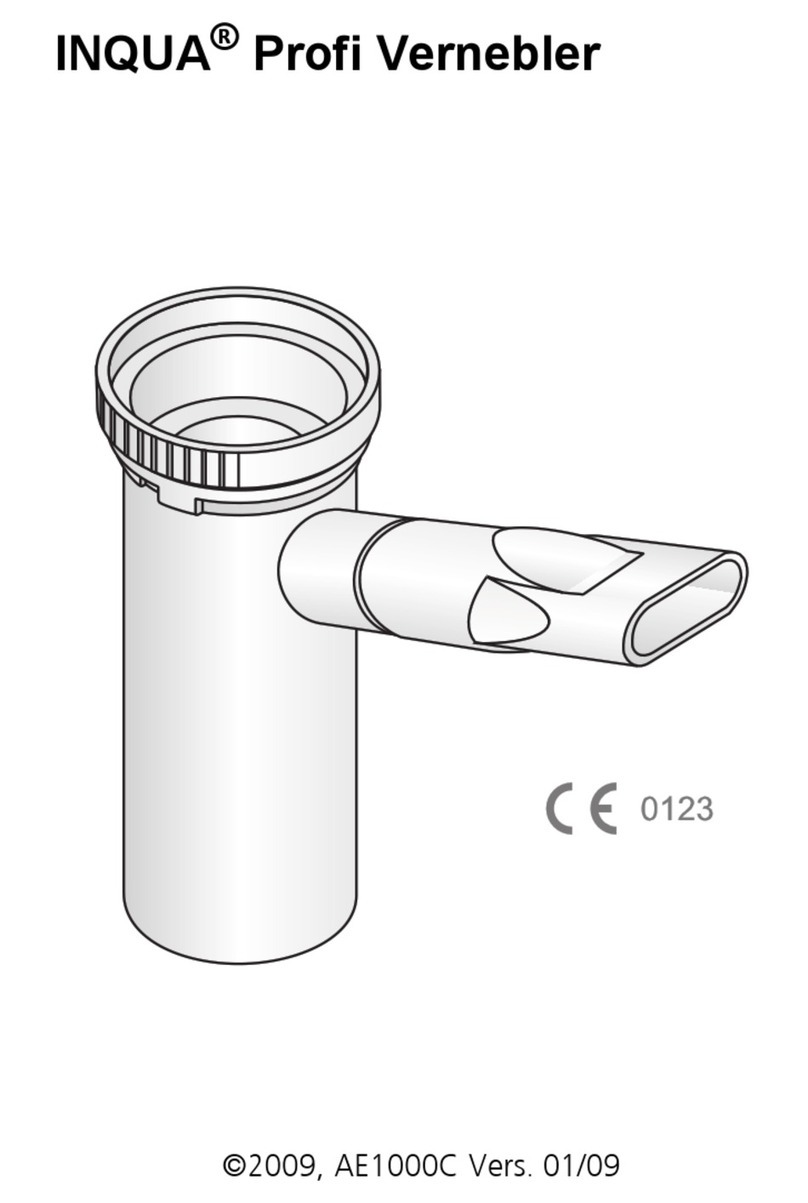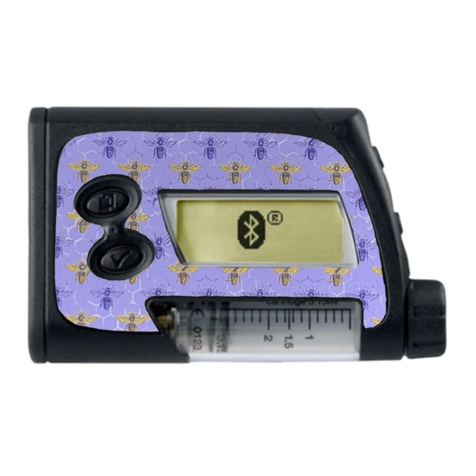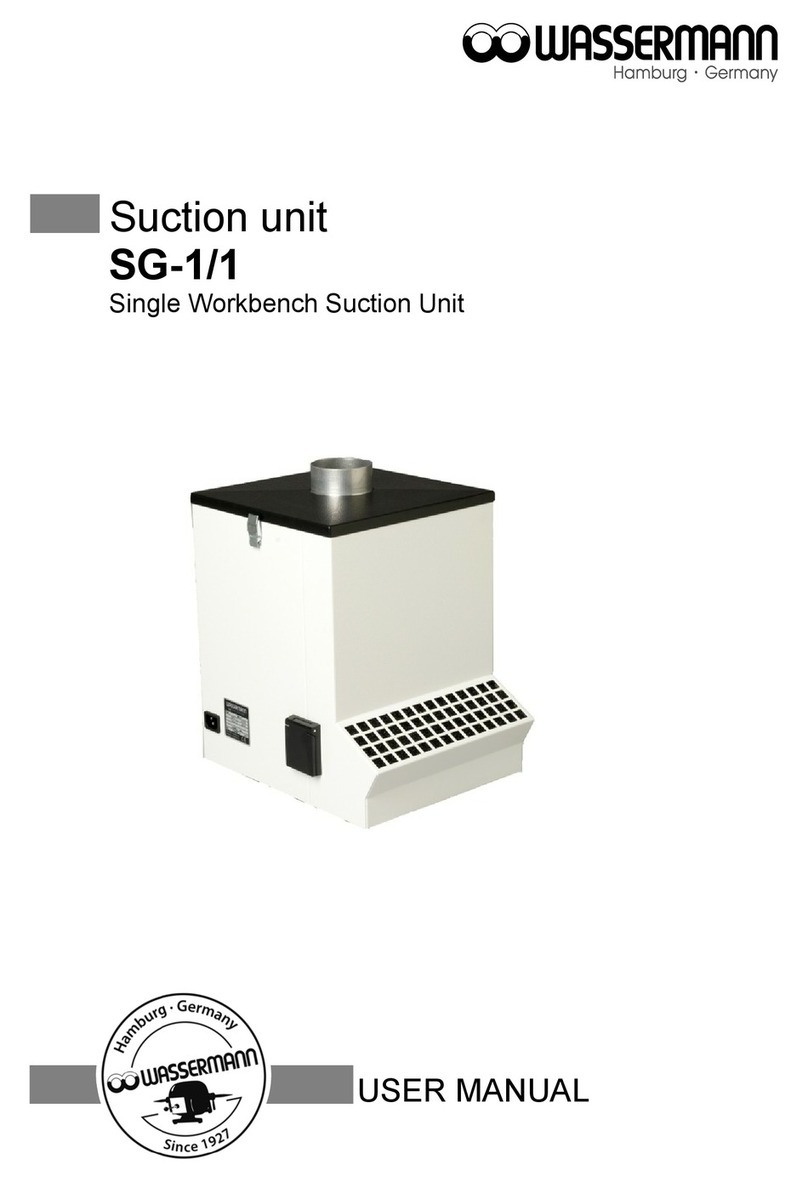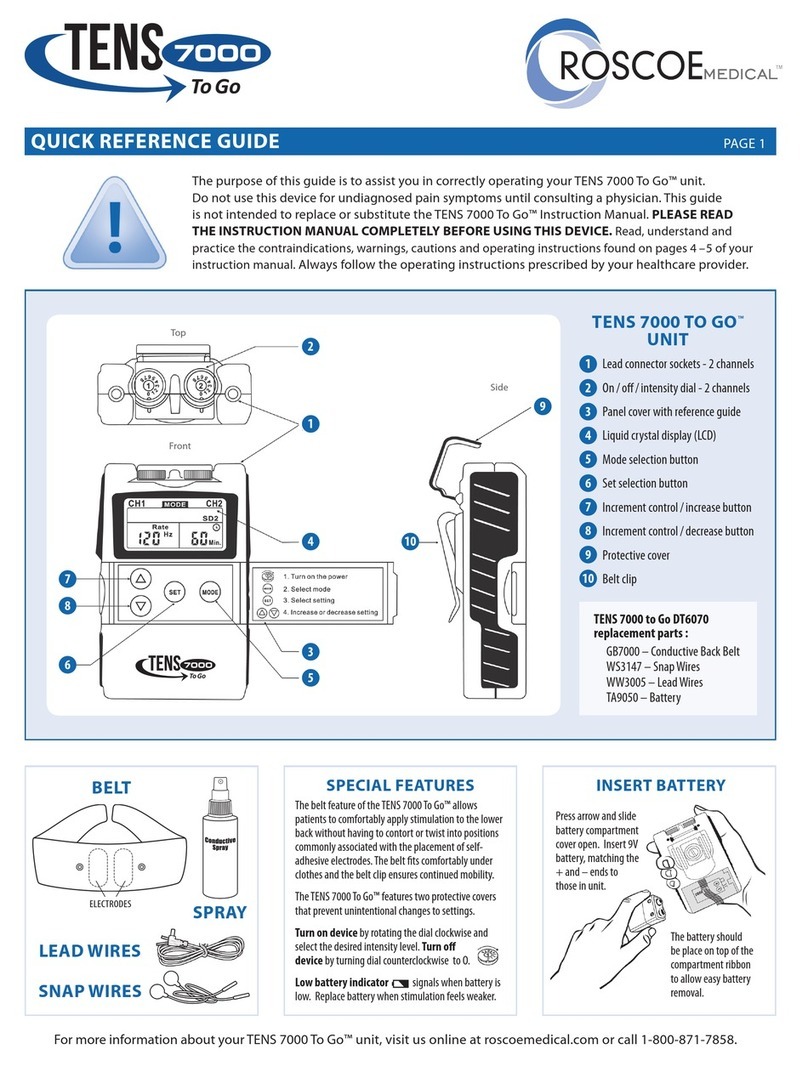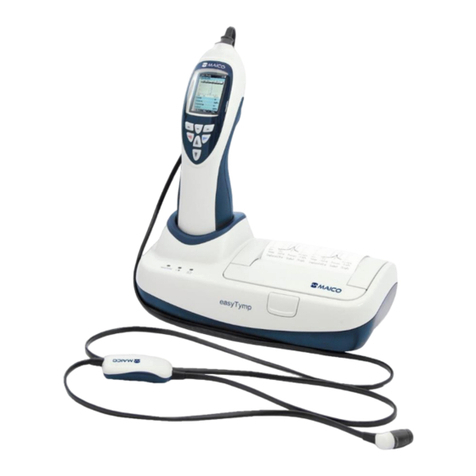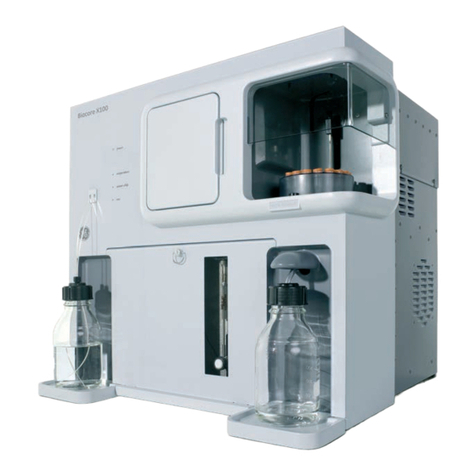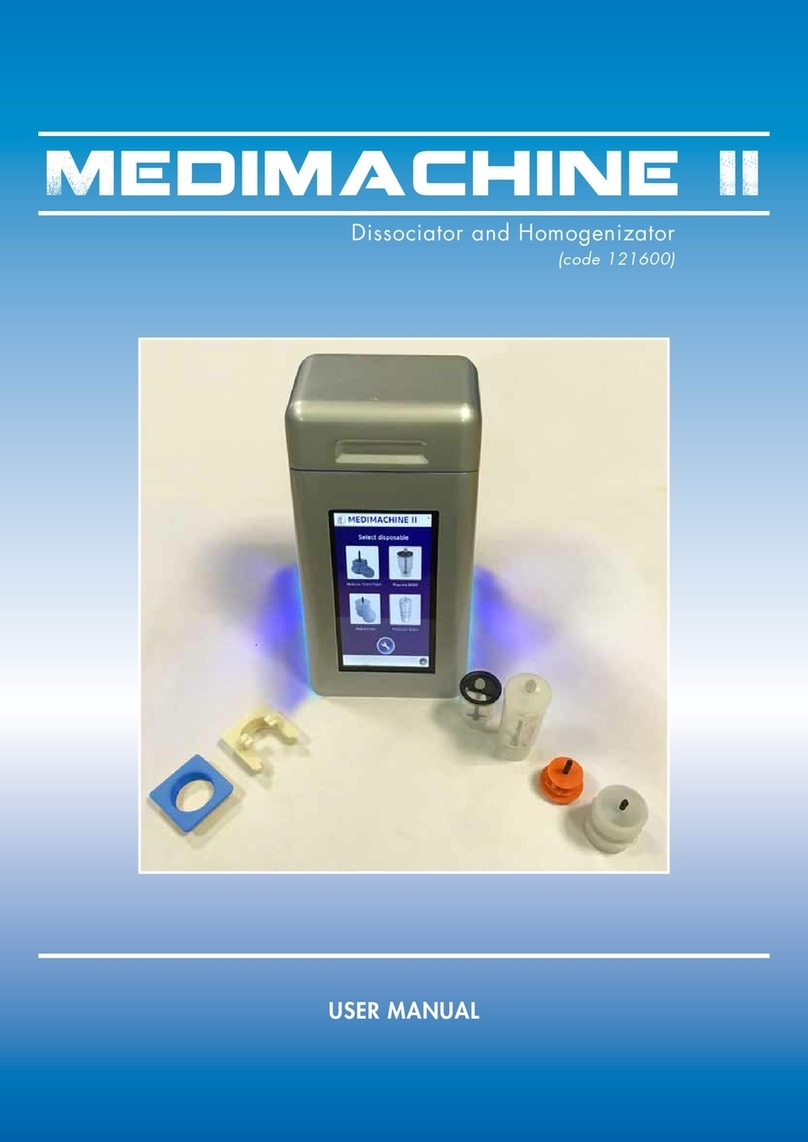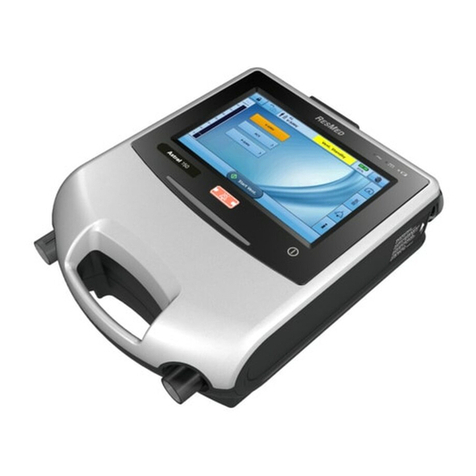5
1.0 General information
• The product patient chair M2 is marked with the CE sign
as to the EEC directions 93/42/EEC on medical products
passed by the commission and complies with the demands
of annex I of this standard.
• The ATMOS patient chair M2 fully complies with the elec-
tromagnetic immunity requirements of standard IEC 601-
1-2/EN 60601-1-2 "Electromagnetic compatibility - Medical
Electrical Equipment".
• These operating instructions are an integral part of the chair.
They should always be kept near the chair. Close obser-van-
ce of these instructions is a prerequisite for applying the chair
according to its intended use and for correct operation.
• Patient safety and interference-free operation can be gua-
ranteed only if original ATMOS parts are used. Furthermore
only the accessories listed in this manual are approved by
ATMOS and may be used in conjunction with the chair, or
else accessories whose use has been expressly permitted by
ATMOS. In the event that other accessories or consumables
are used ATMOS does not guarantee the safe operation and
reliable performance of the patient chair M2.
• ATMOS cannot be held liable for any damages resulting
from the use of accessories or consumables from other
manufacturers.
• ATMOS considers itself responsible for safety, reliability and
performance of the chair only
- if assembly, readjustment, modifi cations, extensions, or
repair is carried out by ATMOS or by persons authorized
by ATMOS;
- if the chair is used in compliance with these operating
instructions.
• ATMOS will supply a service manual containing detailed
circuit descriptions and schematics as well as information on
adjustment and servicing to service organizations authorized
by ATMOS.
• These operating instructions are in conformity with the chair
specifi cations and publications on safety of medical electrical
equipment valid at printing date.
• The ATMOS quality assurance system fully complies with
the international standards EN ISO 9001 and EN 46001.
• No part of this manual may be reproduced without written
permission from ATMOS.
1.0 Indications générales
• Le fauteuil pour patients M2 porte la marque CE suivant
la directive 93/42/CEE du Conseil concernant les produits
médicaux et remplit les exigences fondamen-tales de
l'annexe I de cette directive.
• Le fauteuil pour patients M2 ATMOS répond aux exigences
de résistance au brouillage de la norme CEI 601-1-2 / EN
60601-1-2 “Compatibilité électro-magnétique - appareils
électriques médicaux”.
• Ce mode d'emploi est partie intégrante du fauteuil. Il doit se
trouver à tout moment à proximité du fauteuil. Une utilisation
conforme aux prescriptions et l’utilisation correcte du fauteuil
présupposent l’observation exacte du mode d'emploi.
• La sécurité de l’utilisateur et le fonctionnement sans panne
du fauteuil ne sont garantis que pour une utilisation de pièces
d’origine. De plus, seuls les accessoires fi gurant dans ce
mode d'emploi et expressément autorisés par ATMOS à
cet effet peuvent être utilisés. En cas d’utilisation d’acces-
soires et de pièces étrangers, ATMOS ne peut garantir un
fonctionnement et un service sûrs du
fauteuil pour patients M2.
• ATMOS n’assume aucune garantie en cas de dommages
dus à l’utilisation d’accessoires et de consommables
étrangers.
• Le fabricant n’assume la responsabilité aux niveaux sécurité,
fi abilité et performance que
- si le montage, les nouveaux réglages, les modifi cations,
les extensions et les réparations ont été réalisés par
ATMOS ou par une fi rme autorisée par ATMOS et
- si le fauteuil est utilisé conformément au mode d'emploi.
• ATMOS met à la disposition des agents agréés, une notice
technique avec descriptions détaillées des connexions, des
réglages et des informations de service.
• Ces instructions correspondent à l’exécution de l’appareil
et au niveau des normes de sécurité technique en vigueur
lors de la mise sous presse. Tous les droits de propriété
existent pour les câblages, les procédé, les noms et logiciels
y fi gurant.
• Le système qualité appliqué par ATMOS répond aux normes
internationales EN ISO 9001 et EN 46001.
• Toute réimpression - même partielle - n’est autorisée qu’avec
l’accord écrit d’ATMOS.
F
UK
Particularly important information is represented in
this manual in frames like this.
Dans ce mode d'emploi, les indications parti-
culièrement importantes sont encadrées.
1.0




















